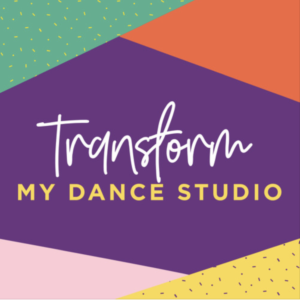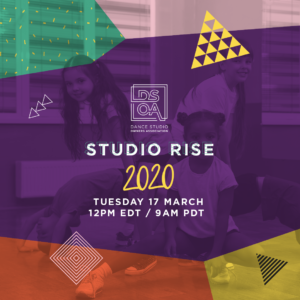If you’ve heard my story before, you know that I started my dance studio at 16 with a friend and really, really struggled the first 18 months. None of us had run a business and all we knew was how to teach dance.
I come from a family of teachers, so while 16 is young to start teaching, I had been doing it since I was 6 – bossing around my cousins and putting on shows in their family loft. I’ve also always been an entrepreneur as I used to charge our family to come and watch the show we put on!
But when it came to running a “real” business, I had a lot to learn! For the first year or so we made every mistake I thought possible… ordering wrong sized costumes, forgetting to invoice people and chase money, not being organized when it came to telling parents about class changes or extra rehearsals. It was really a hot mess! But, without those mistakes we would not have learned and we wouldn’t have sought out a mentor to help us.
The best thing about mentors (when you pick the right one) is they are generally someone who has walked the path you want to walk. They don’t need to be 1000 steps in front – just a few is fine. You may have 100 students and then reach out to a studio owner who has 400 to ask them how they made that leap, or maybe you’re still renting multiple spaces and want to go into your own studio but are unsure how to make it work. There are many questions and issues where you can reach out to a studio owner who has been in your shoes to get guidance and advice.
This is what we did. We got on board someone who had created and sold a studio and asked for some advice and guidance, and the one thing that stuck more than anything was the fact that we had ZERO systems in place!
I was like “It’s ok, it’s all in our heads, we’re fine.” Unfortunately, the truth of the matter was we were the furthest thing from fine. We were exhausted, low on cash and really over it.
I was responsible for spearheading these changes. While it was a real challenge, it was addictive because I was seeing daily how the things we were implementing were making a difference in the business and it was all around our core systems.
1. Goals & Execution
2. Finances
3. People
4. Promotion
5. Programs
Each of these main areas in your studio have a bunch of systems within them so that anyone can be handed a process and follow through on a task. So the greatest thing was once we had these systems in place we started hiring staff to help build the studio we wanted from the beginning.
We ended up moving into our own studio, hiring an office manager and getting on board a few teachers to help take the teaching hours off us so we could spend more time working ON the business instead of IN the business. All of this happened in 6 months.
Personally, I got back my passion for the business, students, parents and teaching. It’s really amazing how some guidance, wisdom and accountability from someone who’s been in your shoes can really turn around your situation. Oh yeah, you also need to take massive ACTION to make the changes a reality.
So, as I mentioned, the systems are what is most important when building a business. It’s also how I was able to sell my half of the studio when I decided to exit the business – because we had something to sell. I also followed this same principal when I sold my dance competition, DanceLife Unite, about 7 years ago. I built it around systems so the new owners just needed to follow what I had created and new the results would at least be “X, Y, Z.”
Today I wanted to walk you through the 5 most important steps you need to take when systemizing your dance studio. It’s a big job, but if you’re working on systems each week they certainly add up. We suggest you and the team doing 4 a week. It might not seem like a lot, but after only a year (and think how long you’ve had your studio) you’ll have 208 systems!
1. Audit Your Week (Do The Same With Your Staff)
There are so many benefits to keeping track of what you actually do during your working hours. For this purpose, it’s going to be about starting to build the list of things you and your staff do regularly that can be turned into systems. You and your team probably do them from memory, but that’s not helpful to anyone else. Make a list of all the things you and your staff do and start your master system list. Essentially it’s a brain dump of everything that people are doing within your business.
TIP: Using a Google Sheet to keep this information is gold. It means you and the staff can update this at anytime as you go.
2. Prioritize The Tasks To Systemize
Next, go through the master list of tasks (you’ll always be adding to this) and organise them from 1 to 5 in terms of how important it is that you get this system created and implemented. Eg: Your new student enrollment system is a really important one so I would rate that a 1. Checking the letterbox systems isn’t so important so might be a 5. Include your office staff in this process so they get on board with the task.
3. Decided On Your System Layout
I like to layout each system to cover:
a) System Name
b) Purpose Of System
c) The Process
When it comes to the process you need to decide if you want written instructions, video instructions or perhaps a combination of both. People learn differently so it’s important you don’t have all written or all video.
4. Assign Systems To Your Staff
One of my mentors once suggested when it came to knowing who would be the best staff to tackle creating systems is to get them all to create a system for tying a shoelace. He said it was the best exercise he ever did! Some people created videos, some did a sentence, some wrote detailed step by step instructions of how to do it. This is going to help you when determining who will be great right out of the gate and those that will need some more training. Once you’ve done that, then assign certain systems to staff or ask them to select which ones they want to complete by putting their initial next to the system in the master Google sheet.
5. Cross Check Systems
Lastly, the systems need to be checked and replicated, meaning someone else on your team needs to pick up the system and execute it. Generally, in the first instance, they will try but then have a bunch or questions or not understand certain parts. This is a good thing to happen as an 8 year old should be able to pick it up and do it. So, make sure there is plenty of detail in there and that the language is simple to understand.
Deep breath. While it may seem like a little bit of work to get these systems created and running in your studio (and it is a bit), it’s going make your life easier as a studio owner and it’s going to ensure that when you’re ready to sell your business that you’ll actually have an asset there.
Keep me updated on your system creation!
Clint 🙂
P.S. The book bundle bonuses for my book Dance Studio TRANSFORMATION end on Sunday. We talk a lot about systems you need in your studio in the book so if systemizing your business is something that you want to do… I suggest you jump on it now and share it with your team. Get info on the book here.
SHARE THE LOVE
[Sassy_Social_Share]

YOUR 7 DAY GUIDE TO ATTRACTING STUDENTS

Increase Profits
Through Introducing Additional Revenue Stream





